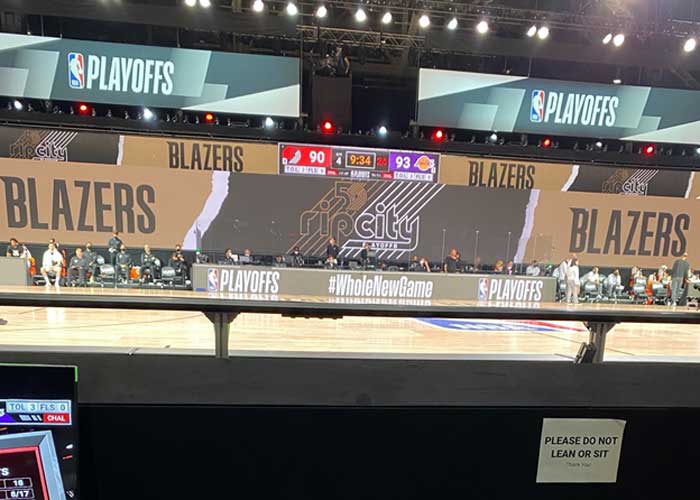Thoughts after a week of NBA Bubble Playoffs
This past week marked the start of the NBA playoffs and a transition to the NBA bubble playoff format. In the current format teams play each other every other day with the usual best of 7 series in effect. One of the things that has become readily apparent is the relative parity associated with a lack of home court advantage. In the first round, both the Eastern and Western Conference #1 seeds (Bucks and Lakers) lost to the #8 seeds (Magic and Trail Blazers). In this respect – players have become attuned to what it means to play without fans and have created their own playoff atmosphere. In the first round it is not uncommon to see benches jump up, yell and provide the much-needed spark that is absent without fans. Motivation comes in various forms; peer motivation and comradery are at an all-time high.
From a medical perspective, I have theorized in a prior blog post that the seeding games were important for allowing players to appropriately ramp up and avoid a streak of injuries as seen in other leagues implementing a sudden restart. After a week of playoff basketball, the incidence of injury has been relatively low thus bearing out this theory that load monitoring and a customized ramp up are critical to injury prevention in the NBA bubble. A few players have even gone on record to state how their level of play has improved over the course of the seeding games and how it has allowed them to get their intensity to where it needs to be for the playoffs. But what does ongoing player health maintenance look like now that we are in the playoffs?
The reality is that in the playoffs, injury prevention and health maintenance live beyond the limelight and is in the shadowy confines that are NOT covered on the sports news cycles. Sports news pays attention when injury is sustained but little attention is given to when injury is averted. Knees and ankles taped with ice, dissecting game footage and plotting for the next match-up in a best of 7 game series is hardly the stuff of “Breaking News” but is critical to health maintenance in the NBA bubble. Other aspects to recovery and game readiness include nutrition, sleep and emotional wellness. NBA athletes while being superhuman are nonetheless human. Specific to nutrition, in order to perform at incredibly high levels, nutrition must be optimized with an eye on what to eat and when. These “whats” and “whens” become even more magnified in the setting of an alternate day game schedule. For teams advancing beyond the first round, emotional support comes in the form of close friends and family being allowed to enter the bubble.
With the multi-factorial nature of NBA athlete health and performance, I must pause here to acknowledge the non-physician sports medicine staff and trainers keeping our NBA players healthy and at peak performance. These unsung heroes work tirelessly throughout the day and on game days are in training rooms for hours before and after each game fine tuning our athletes. While you are watching the next NBA bubble playoff game, it might be tempting to focus in solely on the players on the court. I would say though that when the camera pans to the bench, look past the coaches and in the rows behind them you will find these stoic men and women who dedicate themselves to keeping NBA athletes in peak playoff condition.






